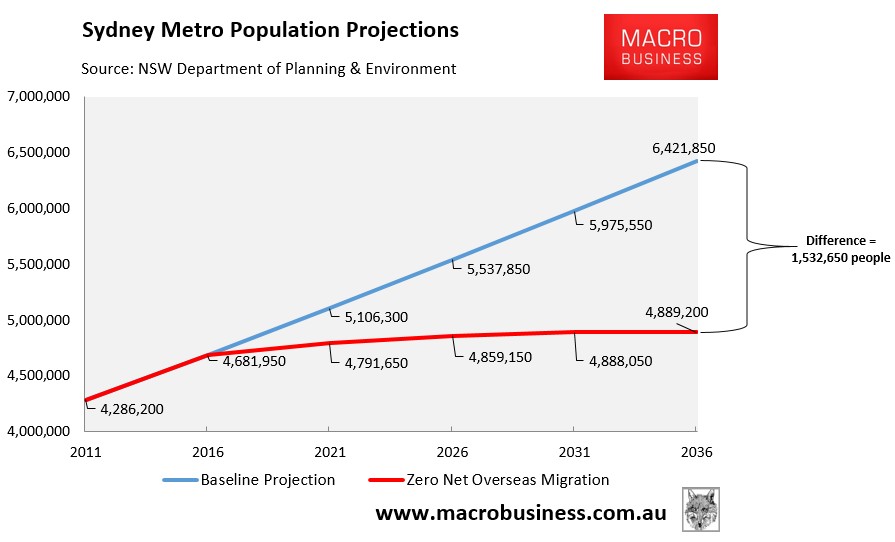If you want a textbook example of the futility of Sydney’s infrastructure program, look no further than the controversial $2.1 billion CBD and eastern suburbs light rail project, whose cost has blown-out by over $500 million due to an incomplete business case, and was thoroughly rubbished in a recent damning NSW Auditor-General assessment.
Due to Sydney’s manic immigration-fueled population growth, the light rail project will have 1,000 more people wanting to use it than its capacity when it finally opens in 2019. From The Australian:
Documents obtained under freedom of information show that in a Transport for NSW “CBD and South East Light Rail Project Benefits Realisation Plan”, dated April 2015, the document puts demand for the light rail at “14,547 morning peak one-hour demand growing at an annual rate of 1 per cent to 16,935 in 2036’’.
Yet in an answer to a question on notice from a budget estimates committee delivered last month, Transport Minister Andrew Constance said that from early 2019 light rail would have 15 services operating in each direction per hour, “meaning total hourly capacity is 13,500 in both directions”.
The Transport for NSW document also contains figures for demand “modelled for the business case” of the project — an earlier estimate — which has demand at 17,866 one-hour peak demand in 2021 growing to 22,533 in 2036.
Labor parliamentary secretary for transport Daniel Mookhey said the documents meant “Gladys Berejiklian and Andrew Constance knew that on the very first day of the Sydney light rail, 1047 people will stand by the kerb, watching packed trains go by’’.
“If people are packed like sardines from day one, imagine what it will be like by 2036, when the area is surrounded by the high-rise apartments meant to pay for it,” Mr Mookhey said.
With Sydney’s population projected to increase by 87,000 people a year for (77,000 via net overseas migration) for the next 20-years – equivalent to 4.5 Canberra’s – the state government will need to invest heavily in infrastructure or risk crippling congestion, as well as lower urban amenity and living standards:

The problem is that these light rail projects are unlikely to provide net benefits for residents and instead represent a subsidy to high-rise property developers located along the line.
The other problem is that large cities like Sydney and Melbourne have already reached such a size that they are exhibiting diseconomies of scale, which occurs when the cost of providing an extra unit of infrastructure increases as the city grows.
Basically, because Sydney and Melbourne are already built-up, there is little room to retro-fit new infrastructure without expensive additions like land buy-backs, tunnelling, or hideous disruptions to existing infrastructure.
Hence, running a population ponzi economy becomes increasingly costly for existing residents. The huge infrastructure costs also forces unpopular asset sales, increased debt borrowings and austerity.
The obvious solution is to significantly dial back Australia’s immigration intake and forestall the need for the costly new infrastructure projects in the first place.

